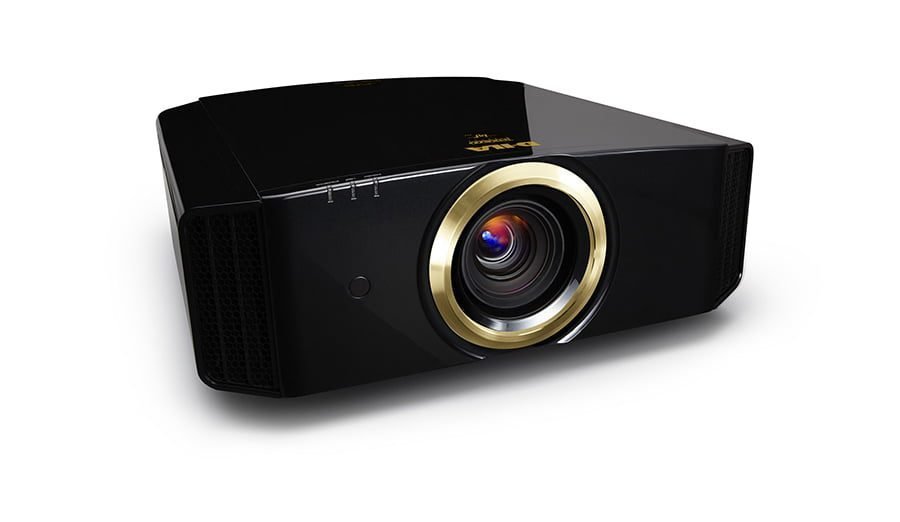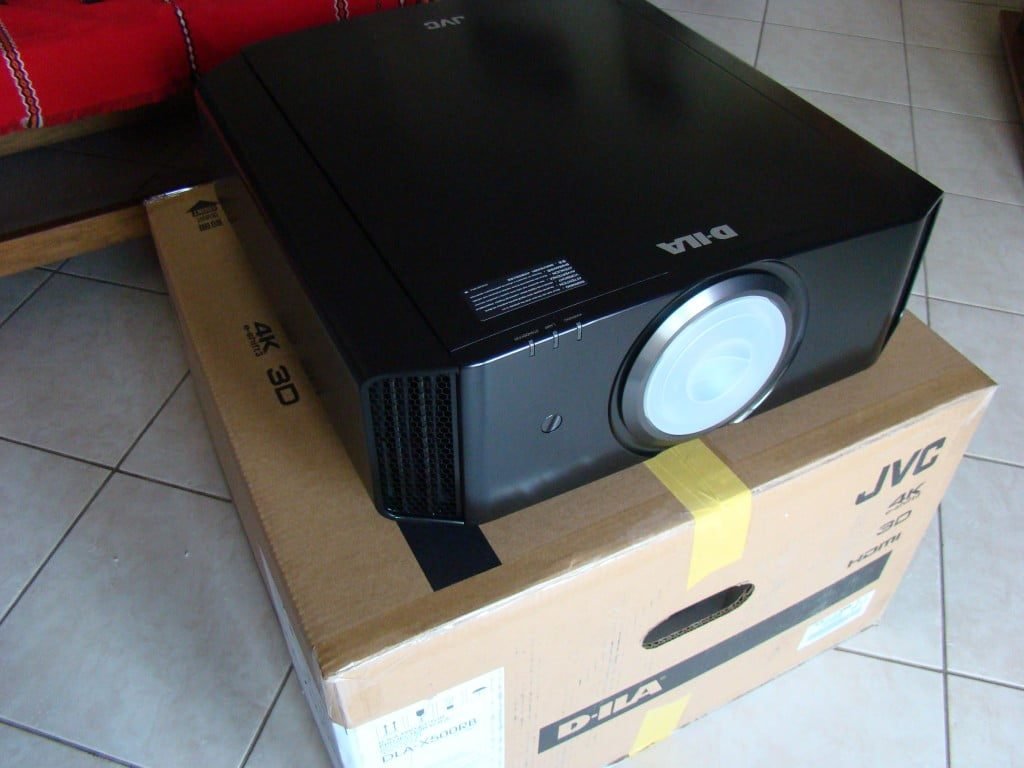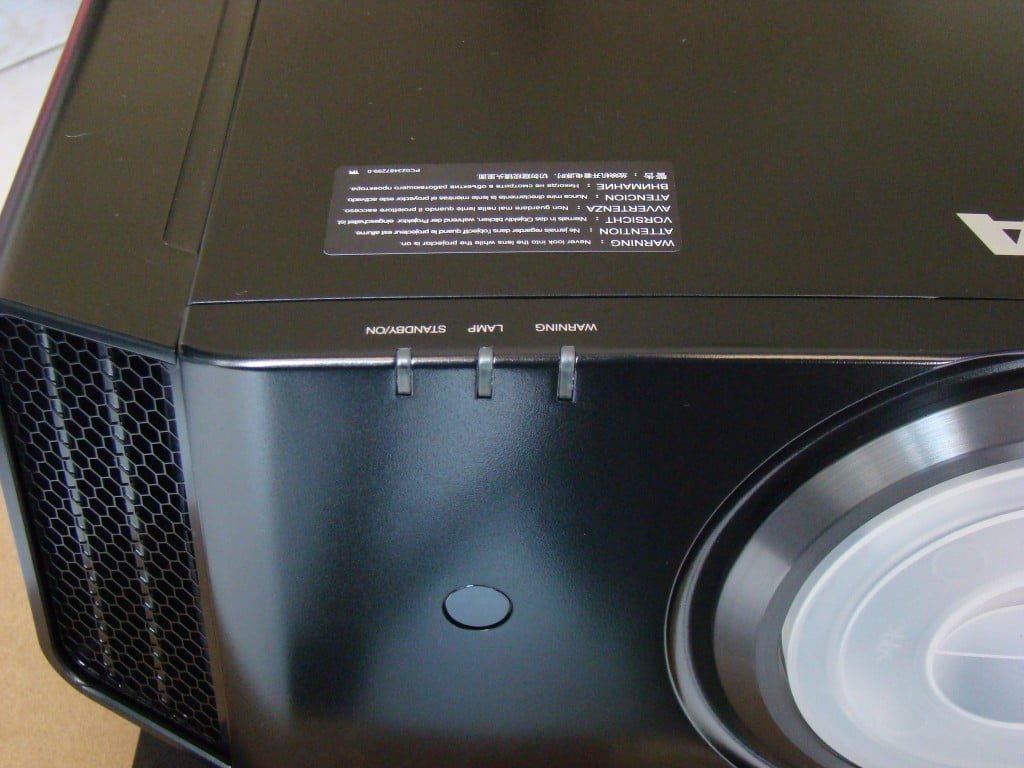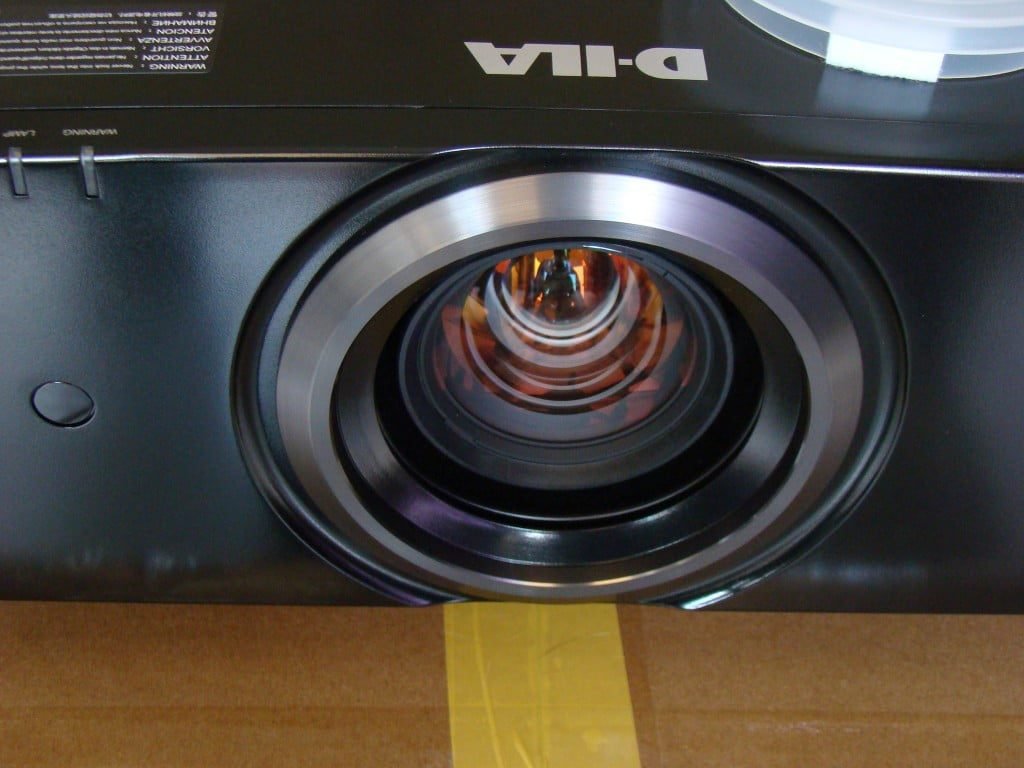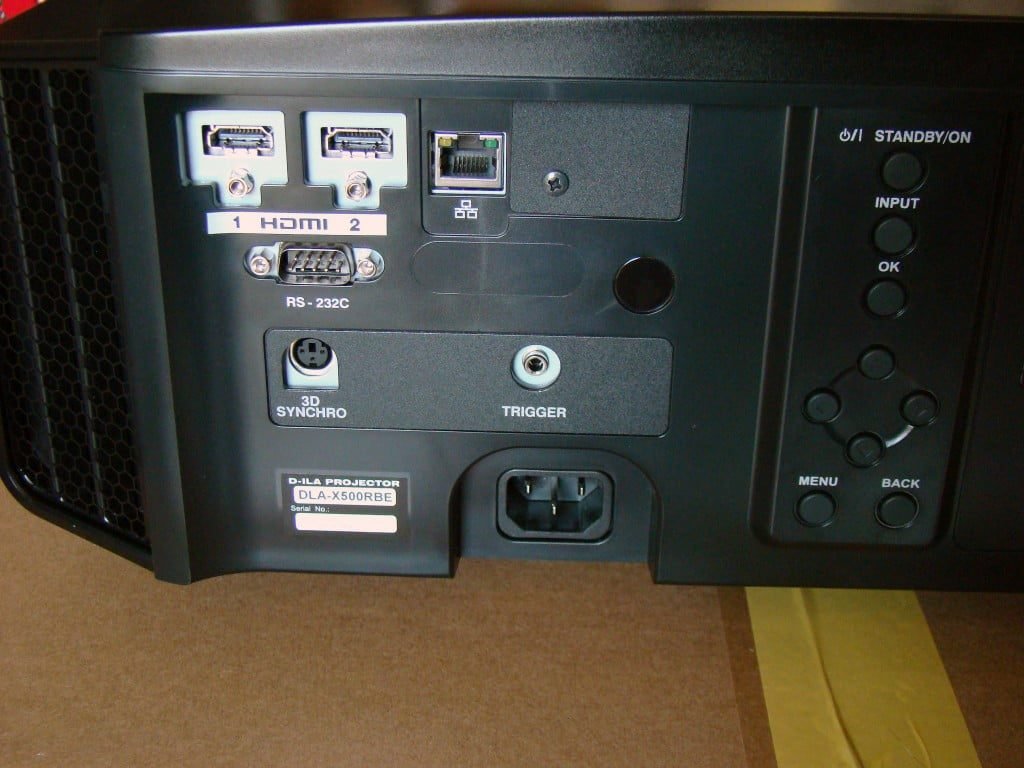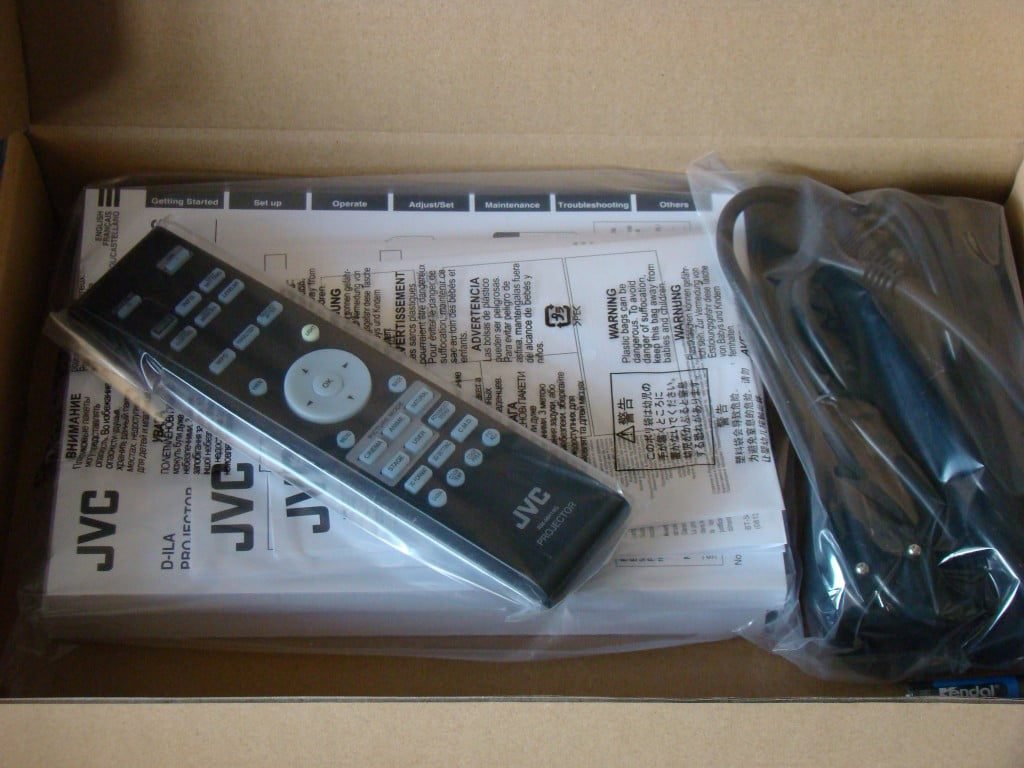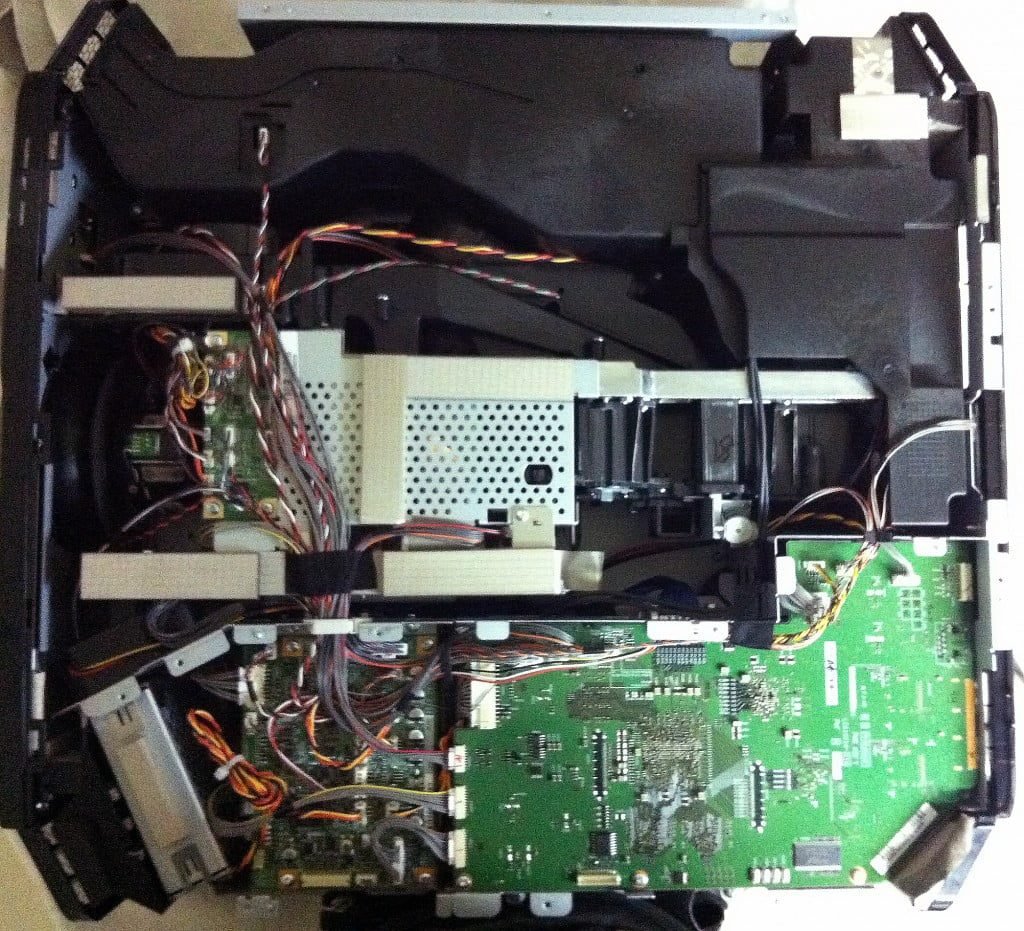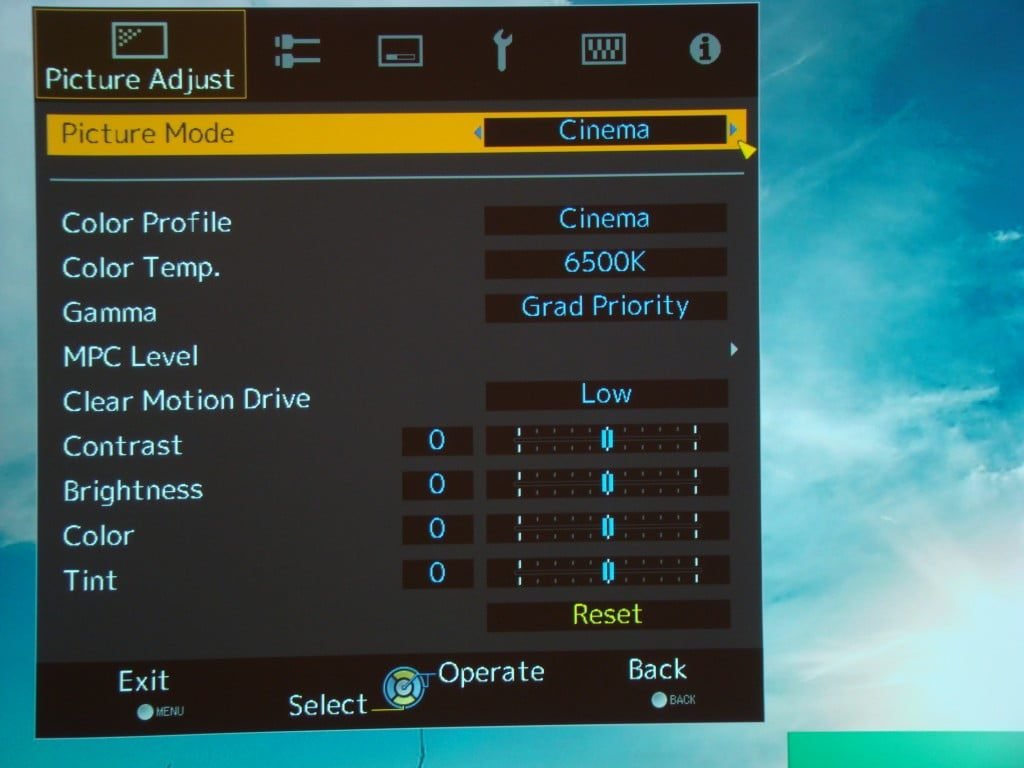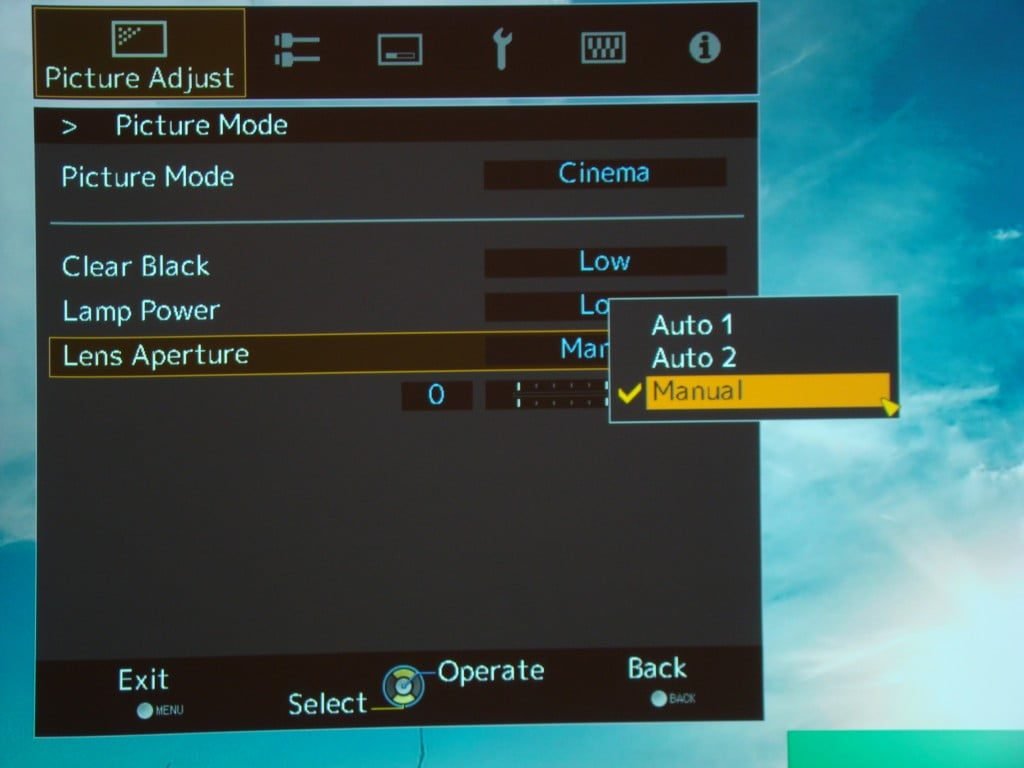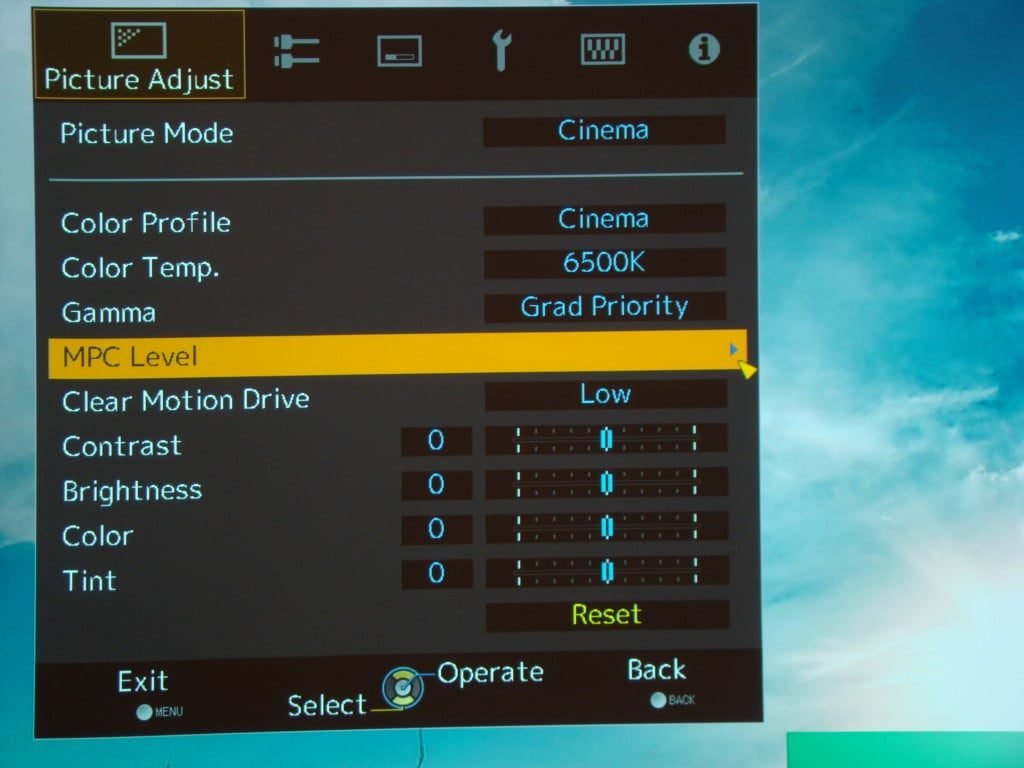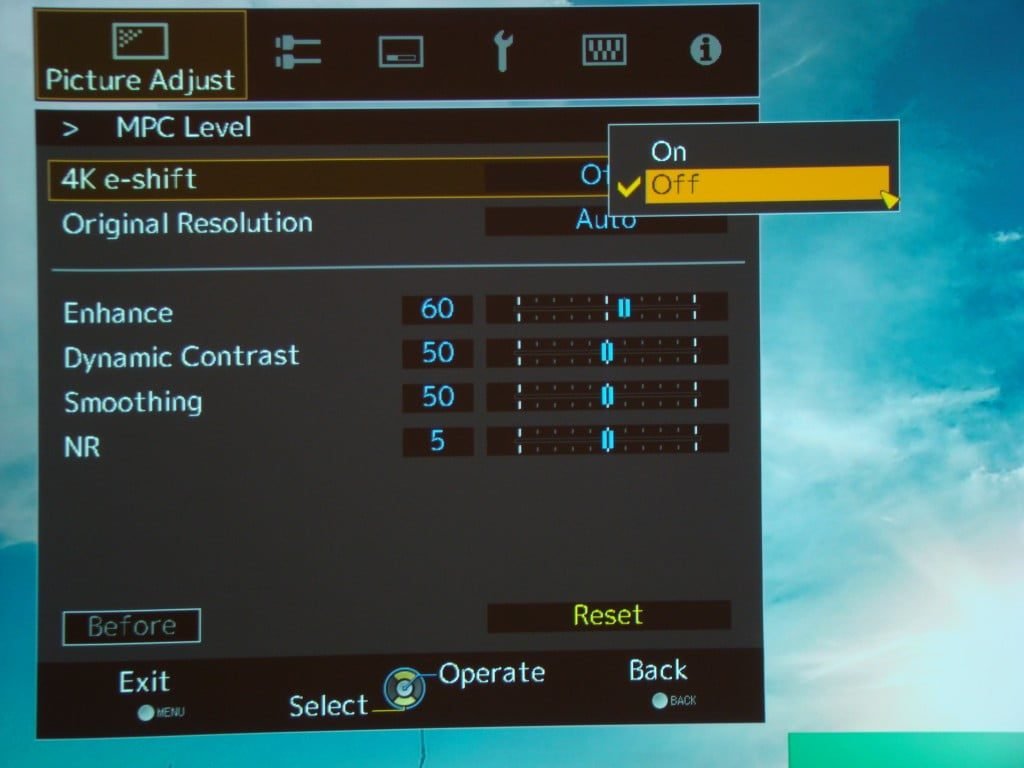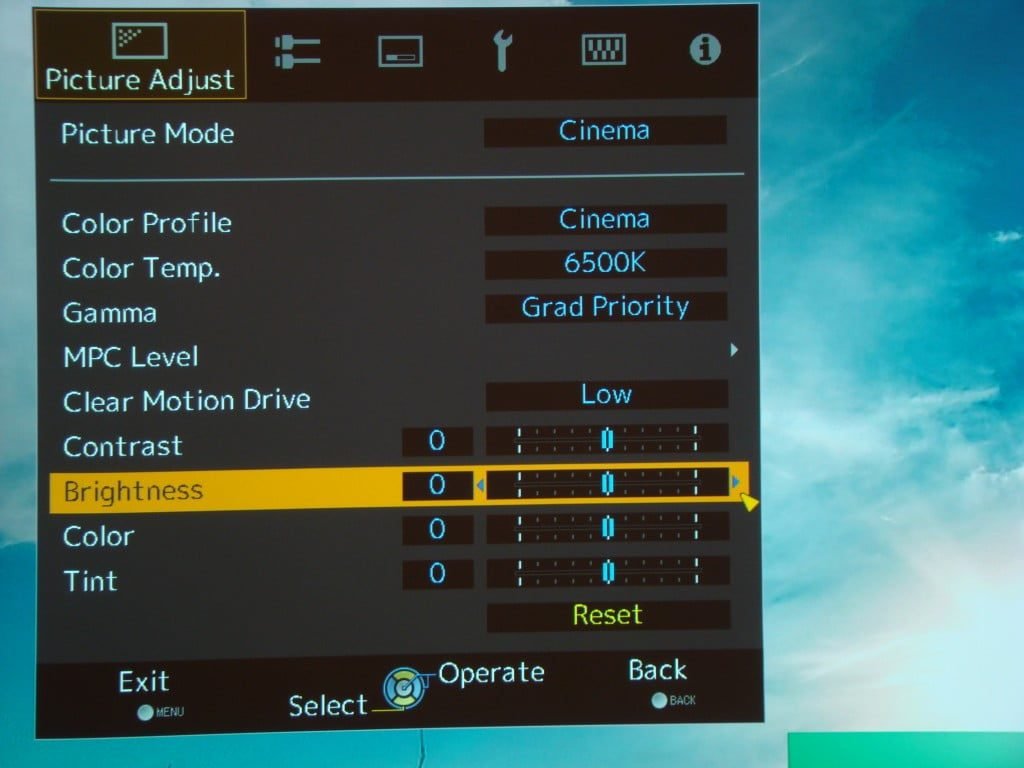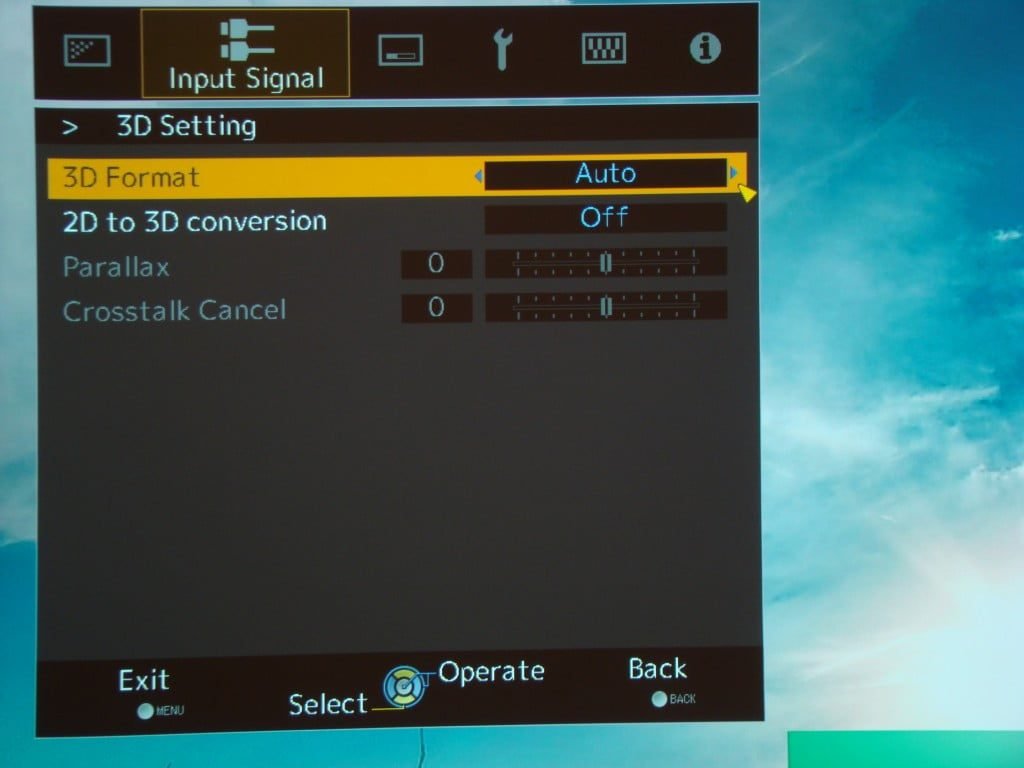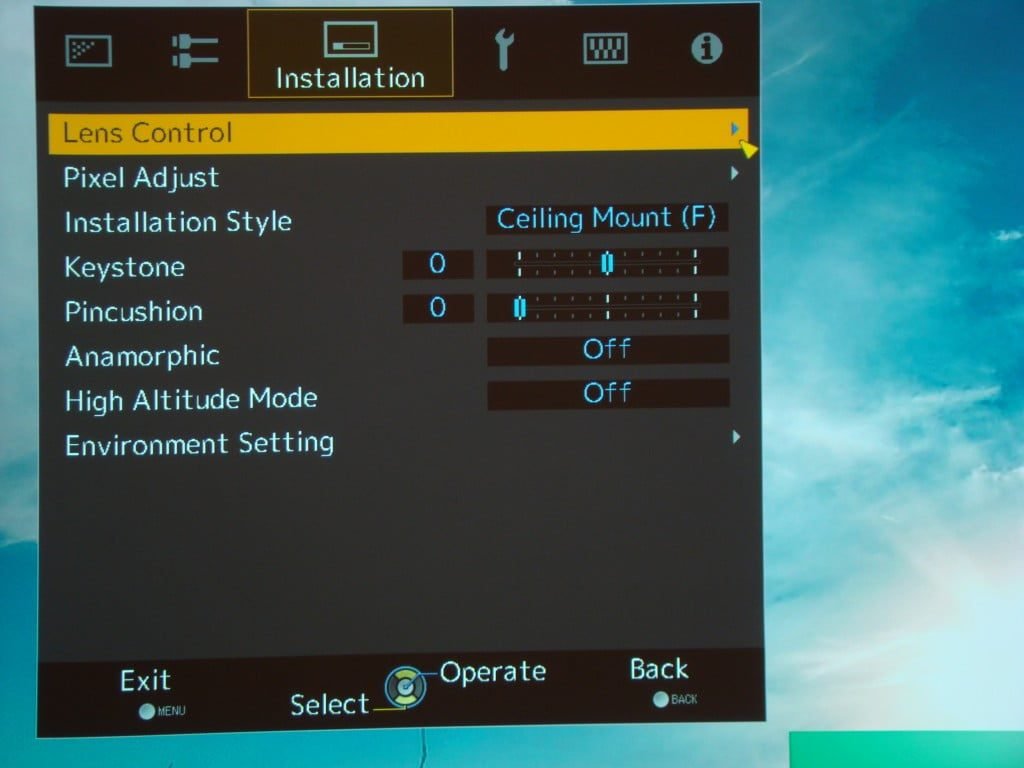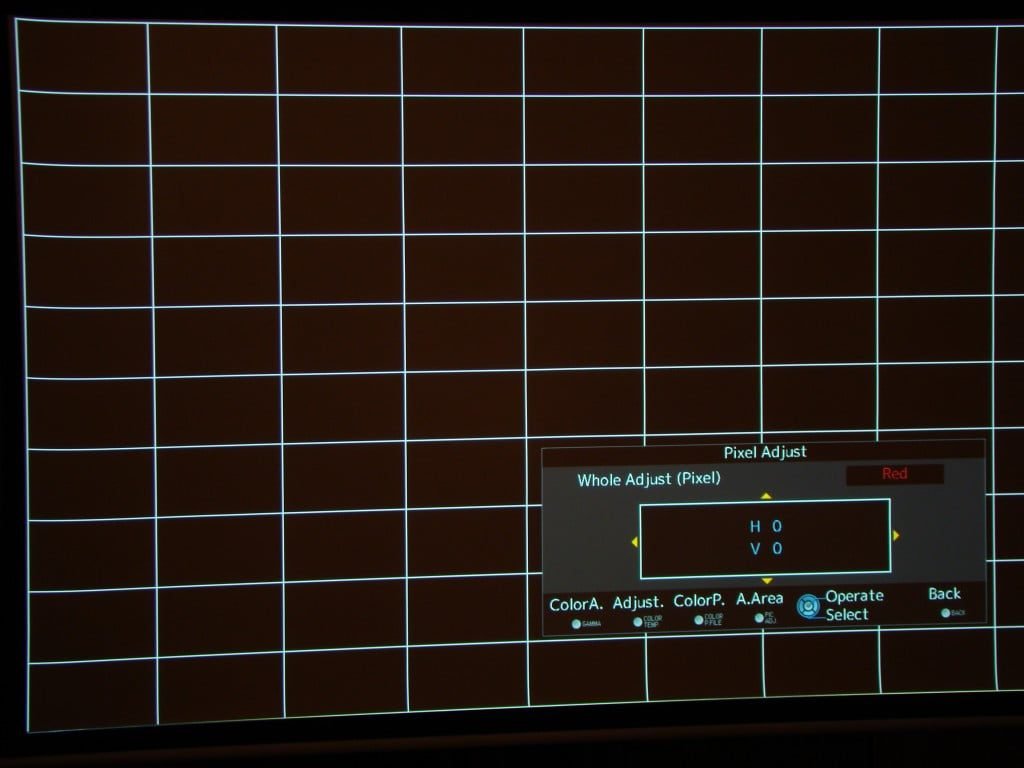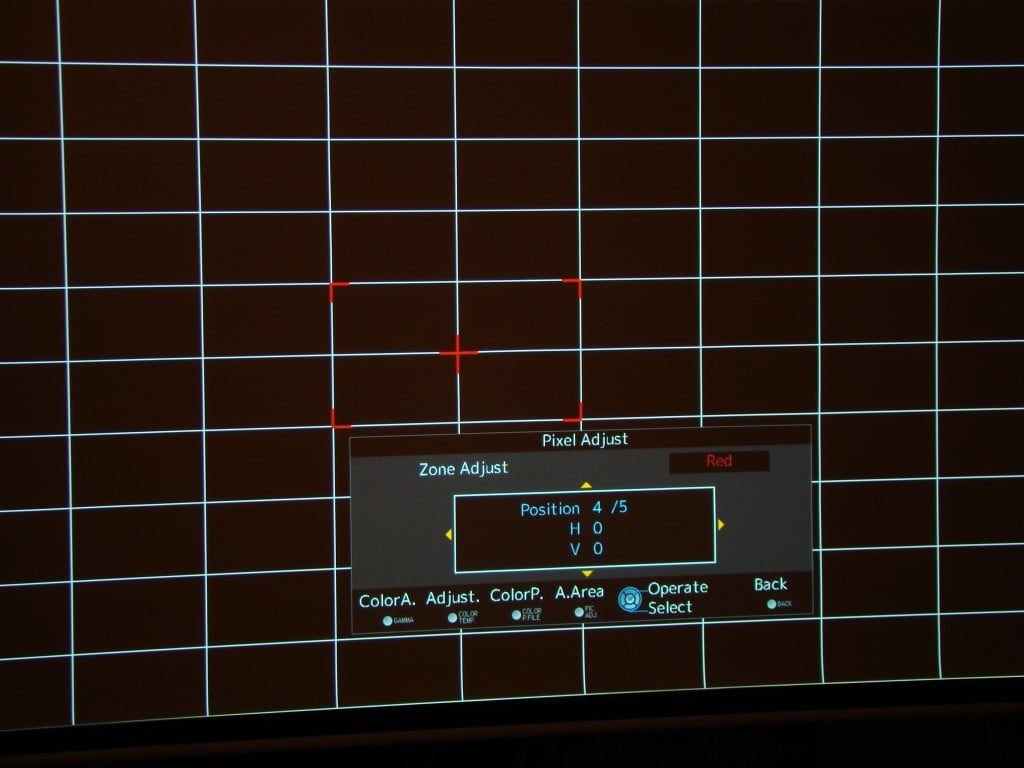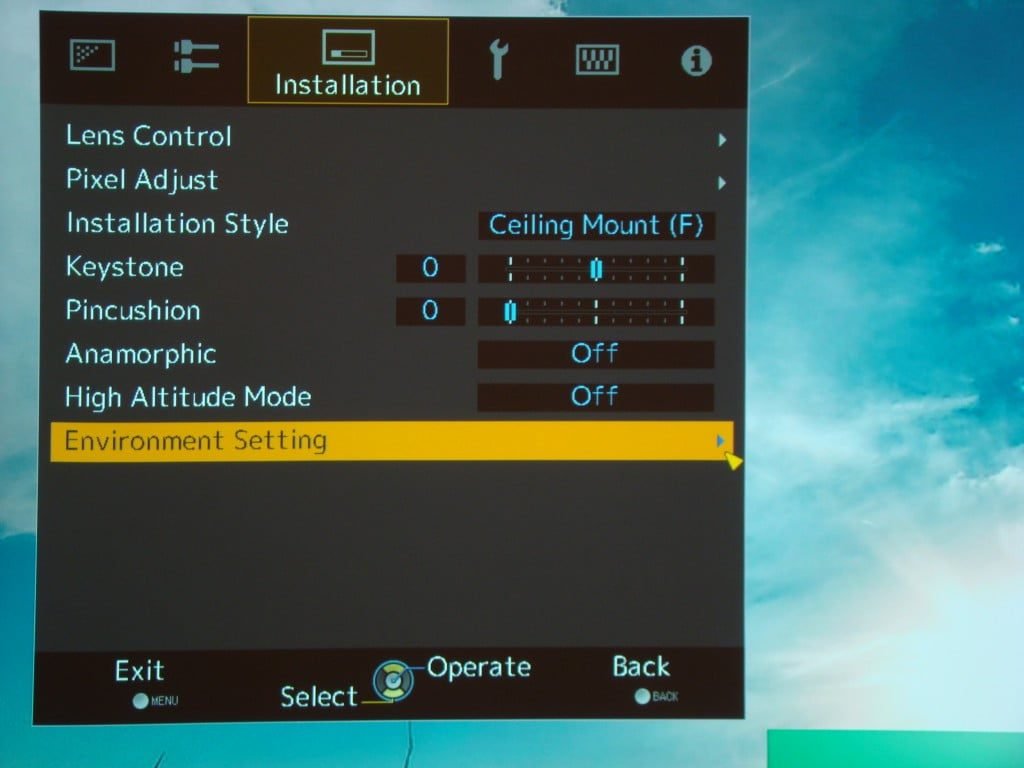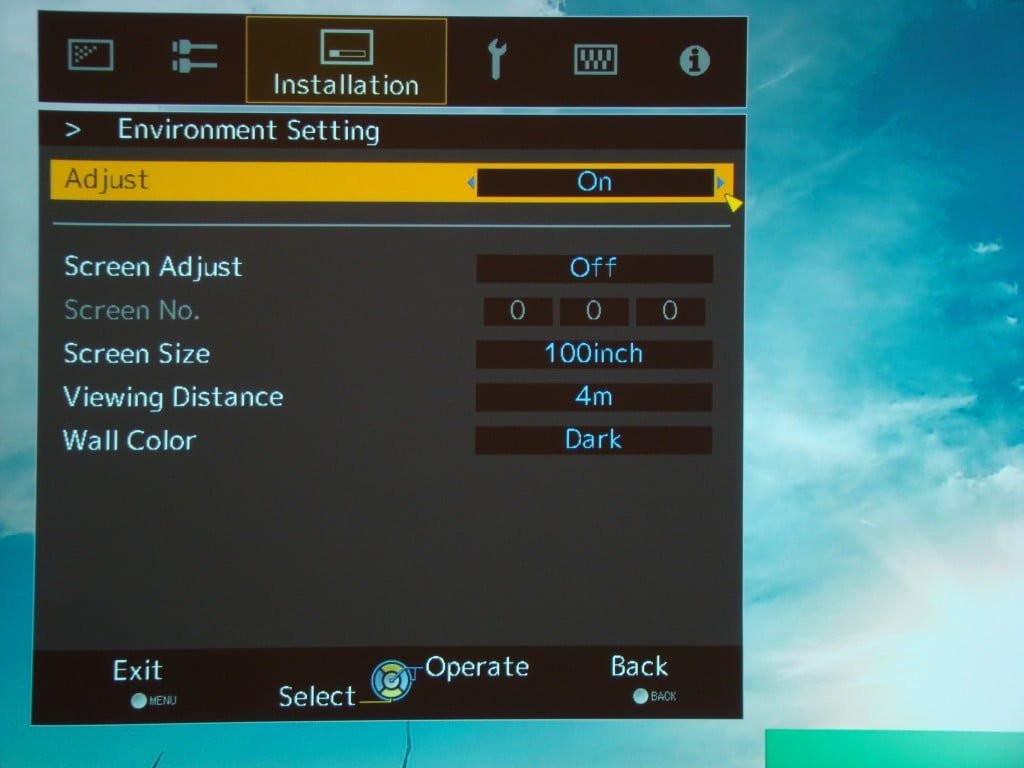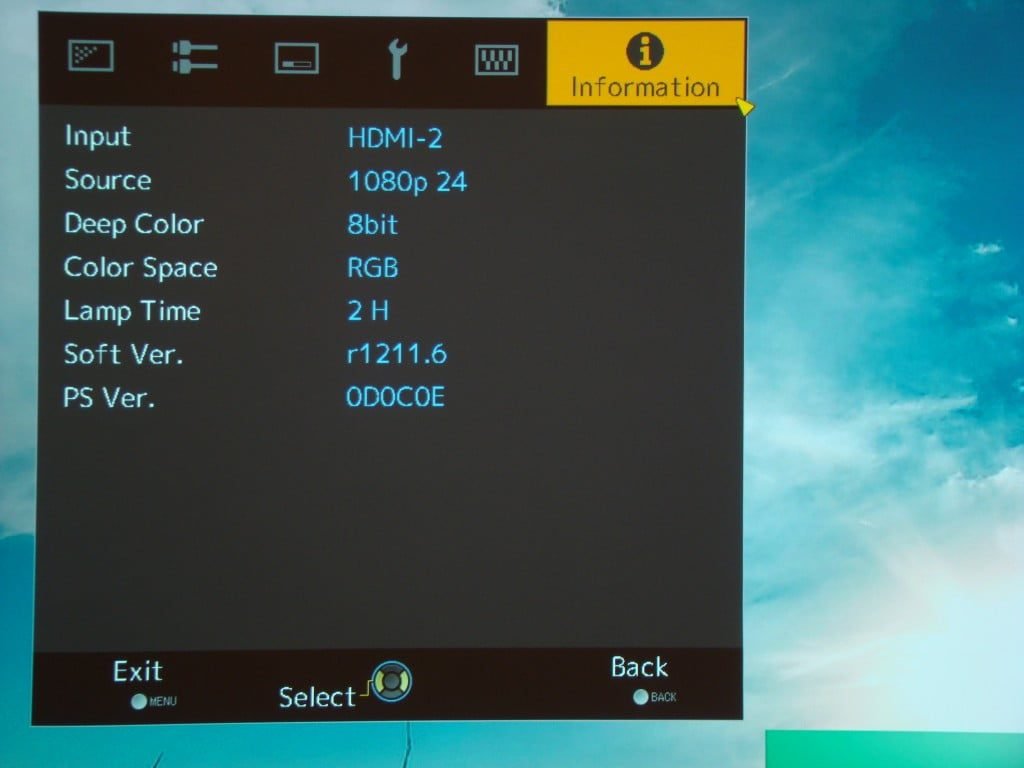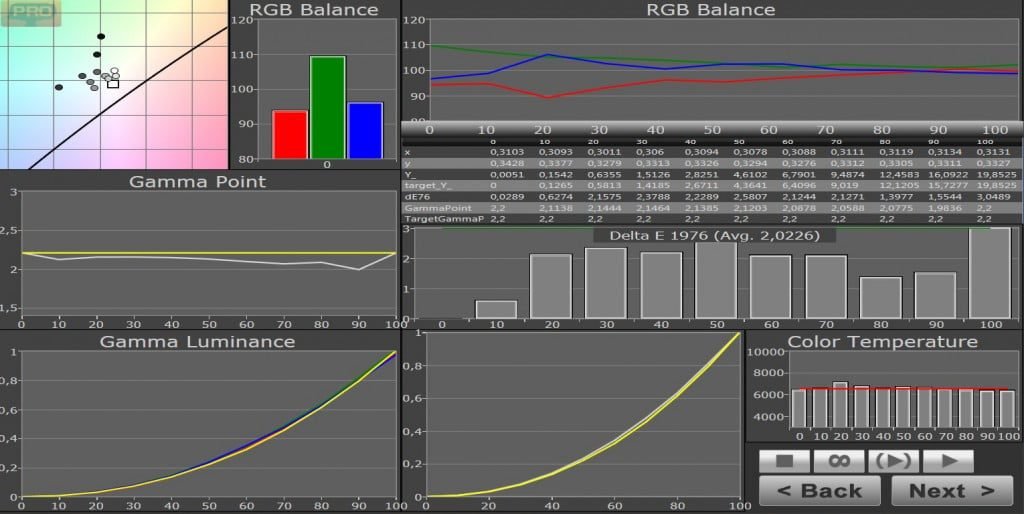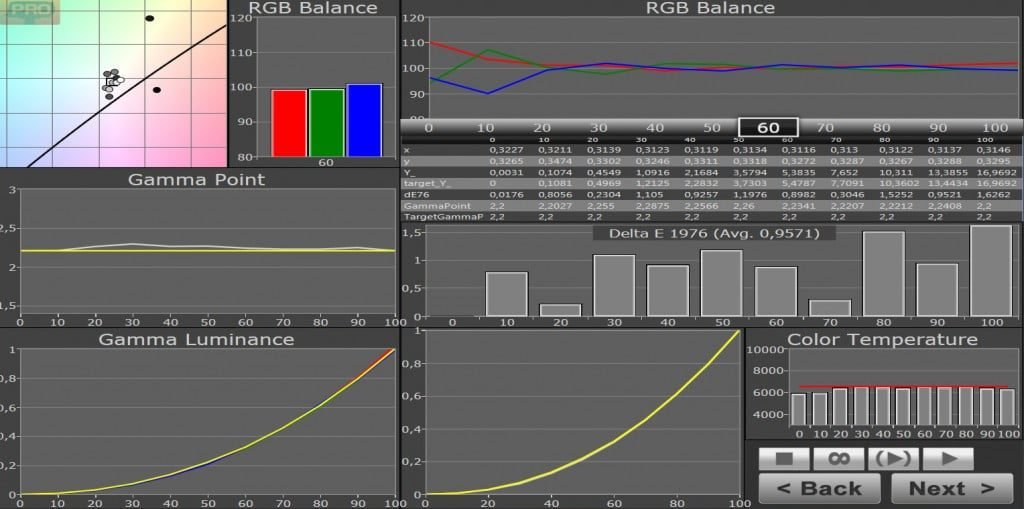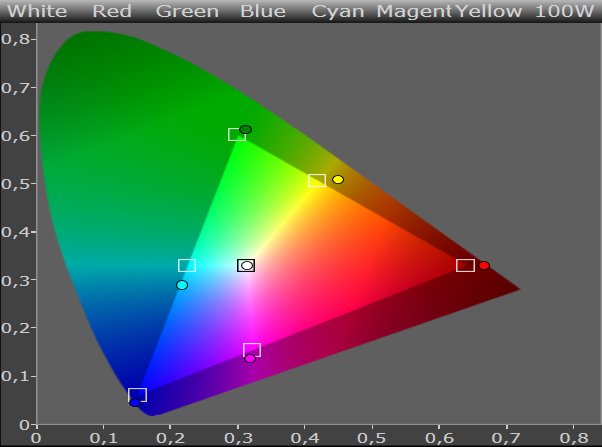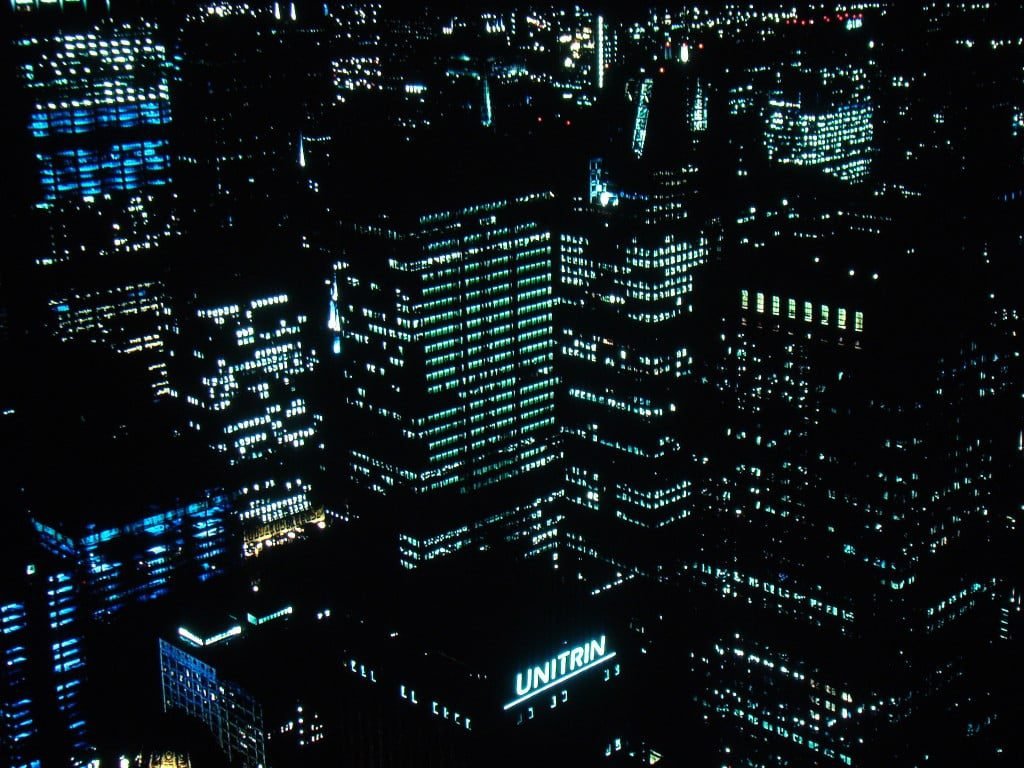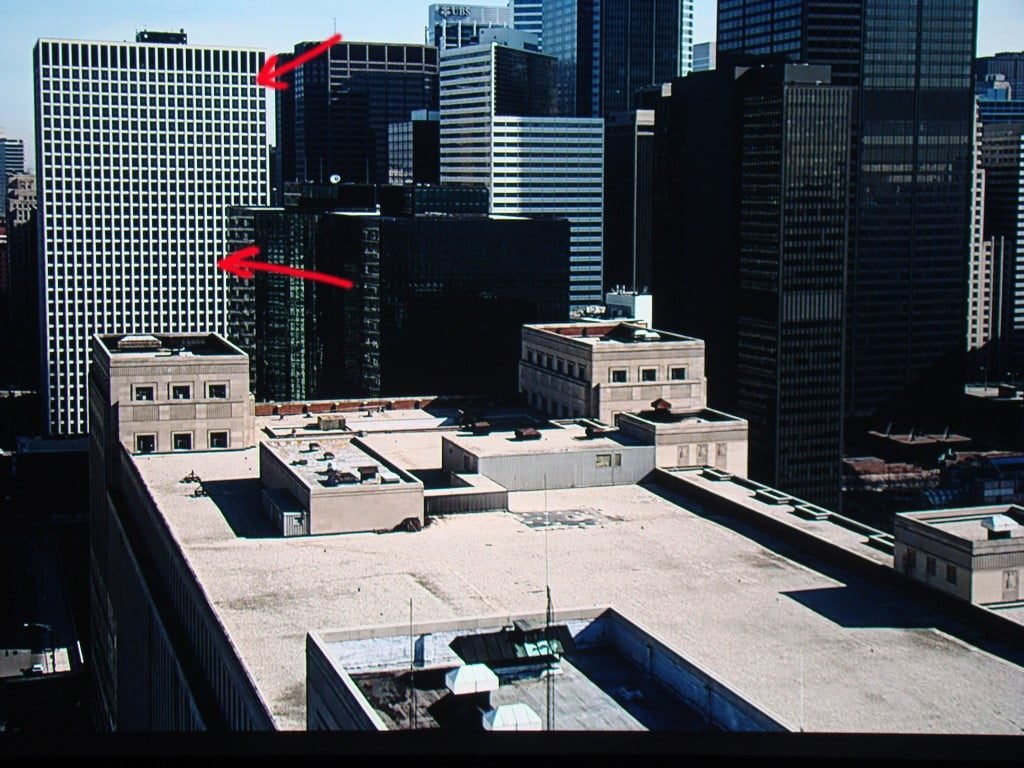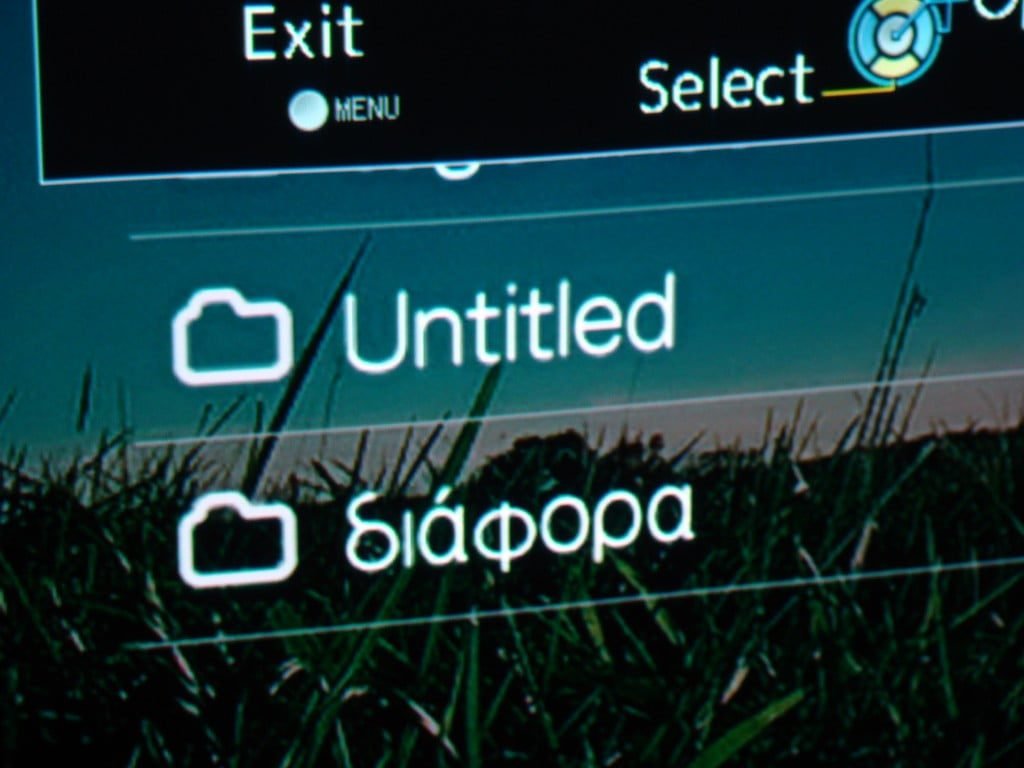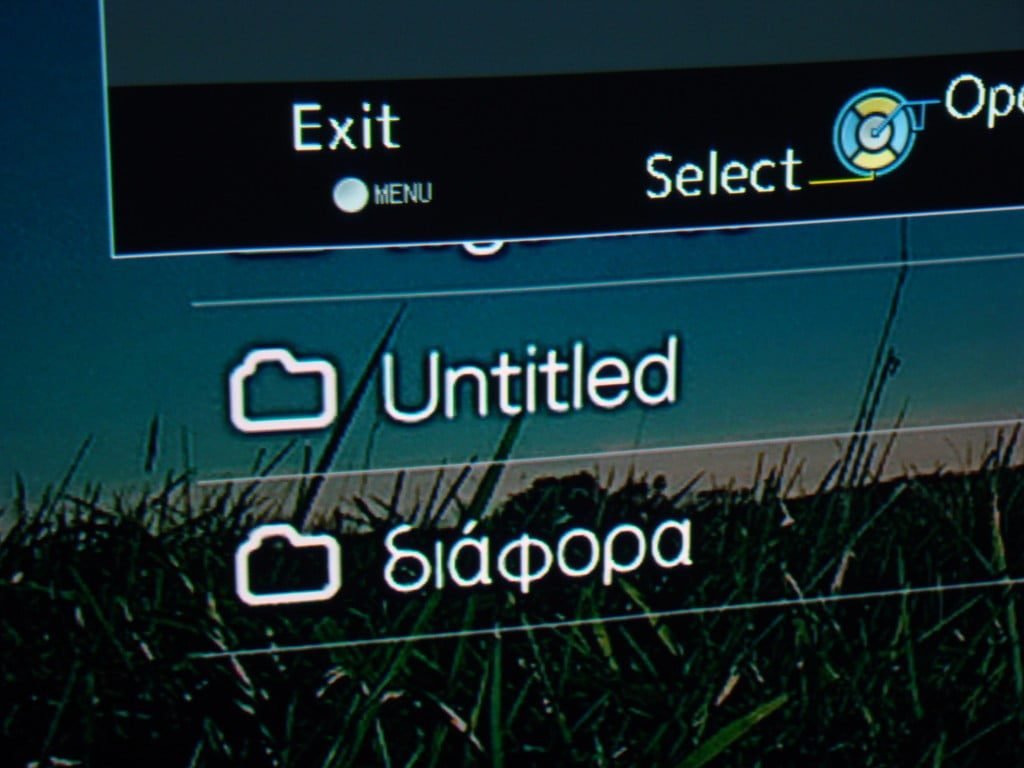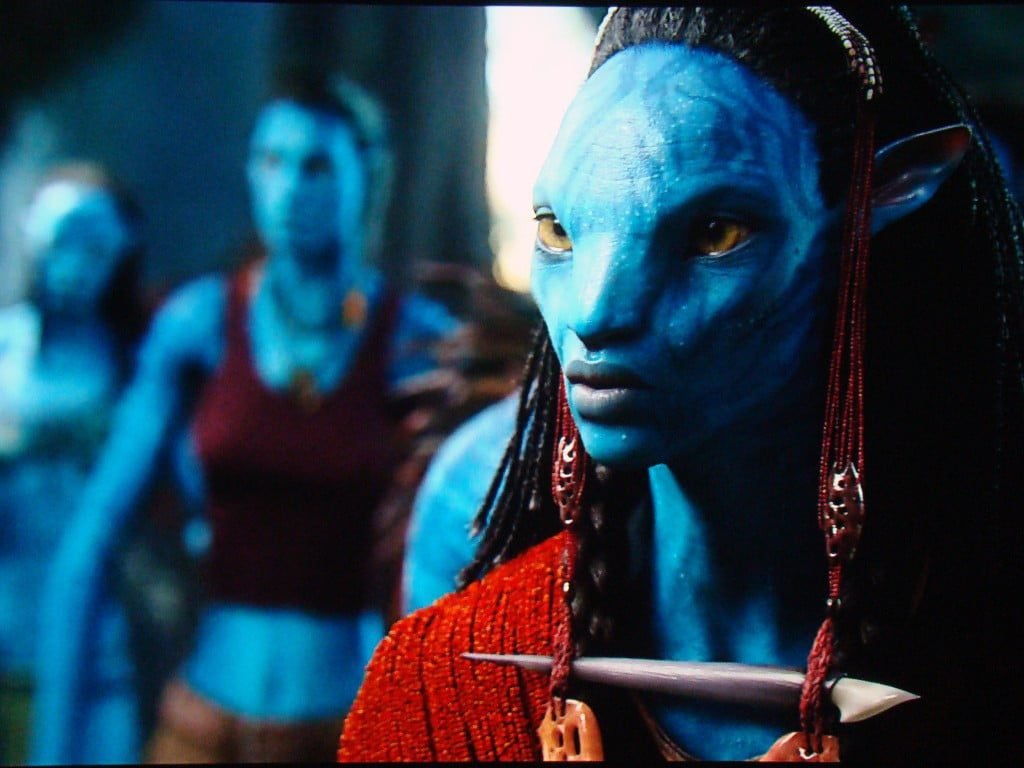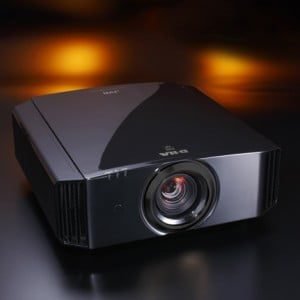For JVC as a manufacturing company in the field of home cinema I think need no special recommendations. Talking about one of the leader companies in the space, resulting in my personal opinion always developments in wondrous space of video at a pace that few companies can follow, at least until today. The weapon; But of course these “magical” DILA panels, who manage to tame the light in a way that seems surreal as unnatural …
Presentation
The X500R is the Benjamin in the company’s latest series, order in the ranks of the X700R like medium model and “big” X900R like the top.
With the official (plus) decrease the list price in EUR 1000 (from EUR 4,999 at 3,999), can now gradually X500R to begin to consider the replacement of the Χ35, who recently retired from production.
With the X500R as the longer introductory model, JVC sends consigned to the dustbin of history the tactic of not furnishing with CMS (color management system) traditionally the small model. The X500R features a Full CMS to configure primary and secondary colors.
The projector exterior has not changed in recent years (since the time of X3 and after) and why do indeed. The JVC has become accustomed to focusing on internal changes, which is about improving the projected image and not to unnecessary stylistic touches, indicating the seriousness with which it treats the evolution of models.
Matt Black color, dimensions 47 x 45 x 18 and weight 14.7 kg!
The lens is a real diamond quality that befits a high end projector
The i/OS and the controls are located on the rear facade of the headlamp, as we have grown accustomed to the company in all its models
The box of “Accessories” and the classic remote control of DILA
To hang the X500R ceiling should go the “feet”, there’s base and screws
But let’s move slowly to see the key features of X500R and improvements compared to the previous series (Χ35-Ch55-X 95).
Features
- Panel: 0.4 inch Full HD D-ILA (1920 X 1080) X3
- Lens: 2X Zoom, Motorized Focus, f = 13.3 to 26.6 mm F/3.2-F4
- Lens shift : +/- 80% Vertical and +/- 34% Horizontal (Motorized)
- Display size: 60 inch 200-inch (diagonal)
- Light source: NSH 230W (lamp life approx. 4.000 hours when lamp is in Low mode)
- Brightness: 1.300 Lumens
- Contrast : Dynamic: 600,000:1 – Native: 60,000:1
- Operating noise: 21dB (When the lamp is in Low mode)
- Inputs: HDMI X2 (3D, Deep Color, CEC Compatible)
Improvements (compared with previous models)
- Increased native contrast 60,000:1
- Add dynamic IRIS
- Redesign and simplification of all electronic circuits
- Function 4K e-shift3 returns analysis on projection image 3840×2160
- New black clear function that improves the contrast in individual parts of the image
- New MPC (Multi Pixel Control) with improved conversion of 2K to 4K
- sixth generation panels DILA with improved contrast-brightness and a smaller gap between the pixels by 40%
- Improved cooling system with reduced noise (21db of 23db)
- Increased lamp life (from 3000 to 4000 hours)
- Application to control the projector from smart devices
Improvements and significant changes and constrained the design of electronic circuits of X500R making simpler and more durable.
Inside everything perfectly arranged. The build quality of the X500R ranges to very high levels.
Nice is the X500R control efarmogoyla from smartphone offered by JVC for worldwide “gkatzetakides”.
Menu
X500R menu except for heaping and design is easy to use for the average user, which you meet difficult models in this category, and not only.
In the first column of the menu have “image”
Pressing enter in each individual parameter leads to a submenu of a specific category
Inside the picture mode except mode that we can choose, and there are clear choices black (contrast improvement in individual parts of the image), the power light bulb (low and high) and the “new” game, the dynamic IRIS. With the manual option to settle permanently at the point that we want to get the perfect brightness for our place.
We can choose color profile depending on our personal tastes or the contents of the view.
Inside the profile color unfolds a full Color Management System (CMS) where it works perfect.
Series has the temperature of the grayscale, color temperature.
In the color temperature we can adjust individual the grayscale at high and low IRE.
Thankfully, we came to the gamma slider. In addition to the standard options we can by pressing enter to enter the sub menu of …
The MPC slider.
Here we activate or disable the 4K e-shift and can intervene in some more picture parameters.
Next stop the notorious frame interpolation, quoted in three settings. The “Spike” just in Low and tackle …
Then there are the classic image sliders that we all know.
In the next column we find the regulatory inputs.
Here the submenu for 3D viewing.
The next column, buffer establishment.
In setting the convergence JVC has compiled the best slider I’ve ever come across in the projector. With this slider, you forget that you knew on the convergence of the headlight tritsipwn, you can configure site-image area 1/16 pixel!!
You can choose to adjust the convergence in the whole Panel or simply in individual zones.
Here in setting the whole Panel.
Here in individual zones.
Towards the end we meet a strange slider that we say to the projector information our location … didn’t I searched above …
The next column that generally relates to sliders.
Similarly …
And finally the column with the General information of our projector … (the firmware 1211.6 and r is the last)
Measurements
For beginning to say that the projector was measured unpaved, with 2 hours on the computer, the colour will change behavior over the first 50-60 hours.
Let us begin with the Luminance measurements. The measurements were made with the projector kalimprarismeno. We say ….
- Low lamp – IRIS completely closed 335 lumen
- High lamp – IRIS completely closed 475 lumen
- Low lamp – IRIS fully open lumen 640
- High lamp – IRIS fully open lumen 770
Native Contrast measurements (again in the cinema mode)
- High lamp – IRIS fully open 38.700:1
- Low lamp – IRIS completely closed 51.500:1
Measuring with the dynamic IRIS did not performed because the number would be “fictional” and is something that I personally do not care.
(measurements made with lux meter CA813)
What can I say about these numbers … If we think that direct and indirect competitors of X500R of “rival” EPSON Corporation, SONY, RUNCO etc. do not outnumber native contrast numbers 6,000:1-8000:1, then only we can realise the size in native contrast X500R’s figures, which seem unreal. The most important thing is that the X500R “turns out” these numbers and on the screen … something that will go into the category “impressions” extensively.
Let’s start for beginning with the measurements in default mode of X500R …
In cinema mode with white temperature 6500 degrees and normal gamma
The projector comes stock pretty balanced. Even if you don’t ever bother with calibration, you will still be able to see the image very close to the reference standards.
With little tease on the gamma and RGB sliders within minutes comes a very good result with the gamma to issoropei ideals.
Teasing the white temperature you can make your image warmer or colder.
Putting the slider to 6000 degrees take the following “hot” chart.
Corresponding to the following baymoys 7000 “cold” chart.
And color the X500R shows good behavior in two color mode deafault, cinema and standard with characteristic light yperkoresmo the color triangle.
Slightly yperkoresmena colors lead to “impressive” picture for many and “exaggerated” for others (I belong to the first category and almost always use a slightly yperkoresmena colors in the setting of my projector … goysta is this what to do:))
Here to say that the projector was measured with 2-3 hours on the lamp and color will definitely change behavior after 50-60 hours, so every effort for calibration before running light bulb is missing though, this as a tip, of course here for the needs of the review we have overlooked this rule.
Cinema
Standard
With full CMS’s sliders you can adjust each color individually depending your tastes or the reference standards. The strange thing is that in the color sliders will find a slider for the color orange! Didn’t I searched above to be honest.
With minimums of CMS using the X500R you can achieve very good results. Wants attention but because each individual setting “ushered in the fields”, e.g. teasing, Saturation slider slightly influence the hue and brightness of color. He wants little, other combined click on the sliders to bring results.
The secondary colors yellow and magenta with obstacles because of the combined regulatory function that you described above and lack of time are not “fighting” as I would like.
Very important setting is the brightness of color, perhaps the most important. On X500R setting is easily done from the brightness slider of the CMS for each individual color.
In general I would say that X500R is a projector that comes very well balanced from the factory and tritsipos for projector displays very good behavior out of the box (and I say tritsipos because monotsipoi DLP display always better behavior out of the box than all other technologies).
The X500R is the joy of “restless binteoprobolakia”, equipped like lobster with sliders that at tempt to hurt her until the last parameter of the image.
Impressions
Reading to achieve 40% smaller gap between the pixel (from 0.5 µm to 0.3 µm) in new 6th generation DILA panels (don’t hide the fact that I was a bit skeptical at first) I wonder how this will translate into the cloth. It was the first thing that occupied me when I opened the box of Ch500R and connected for the first time in the stream.
To remind you that King on domain space between pixel “is a DLP technology and there all electronic circuits running behind the Panel and this enables the DMD chip take credit for the amazing rate (over 90%) fill ratio (percentage who occupy the pure pixel in the picture), with technologies of JVC DILA and SXRD SONY’s to follow in walking distance , and EPSON’s LCD technology lags significantly in relation to all the others.
The King died ladies and gentlemen … welcome the new King …
I did many tests in order to see with my own eyes the dramatic improvements of 40% in the space between the pixel and my conclusion is that the JVC can now take credit for not only the most kontrastati image in the headlights, other and more compact. The pixel to discern, even sticking your face in the cloth is something extremely difficult to X500R. It really is something that pleasantly surprised realizing it, and that makes you wonder how in the dark @ t @ managed the Japanese engineers to the symptyxoyn gap between the pixel panels to such an extent.
To give you to understand in about why I am talking about, feeling solid picture that you get with this fill ratio is a 40aras full HD tv that the watch from 5 meters distance.
Of course, reducing the gap between the pixel has its negative effect which is none other than the illusion that the Viewer is given that the projector loses slightly in sharpness (something like slightly defocus). It is found only in static images (such as desktop computer).
Call the illusion because viewing movies it does just the opposite, the sharpness is blown due to the lower vacuum. Rule, the larger the gap between the pixel in the image of a projector, the greater the sense that (zinc) makes better focus and vice versa.
If for example the image I see no pixels then we would have the worst feeling on our lens focus, more and more compact and sharp image when viewing movies. In the equation are included and others parameters of course, as quality lens, optical design, etc.
Convergence-Dissimilarity-Sharpness
Before you begin viewing hardware on X500R I put some paterns in order to see how the go to field display convergence and refraction of the lens. Areas suffering traditionally tritsipes implementations of all companies and has purely to do with the design of the optical engine of each model.
Convergence sector specific piece that I had in my hands gets just perfectly. It was so good that it didn’t even place the slider adjust pixel. There was not the slightest deviation of one of the three primary colors in the picture with the projector to reminiscent good DLP monotsipo. I have the impression that the convergence theme is something that must slowly be forgotten on JVC implementations like “stress” older seasons. 10 in 10 well convergence sector without even put into the equation the amazing pixel adjust slider (by 1/16 pixel’s!) that has the X500R.
As regards uniformity, the JVC has traditionally accustomed to very good individual behavior models. The X500R is no exception, giving a homogeneous white from side edge to the image without color cast suspicion. This regards the tall IRE, as lower in light and under the slightest begins 30IRE deviation uniformity to becomes more intense and at that point the X500R reminded me that this is a projector with three panels having some subtle shades of green (visible only to experienced eyes).
Generally, in areas of convergence and uniformity in tritsipes optical machines the greater role played by quality in design and implementation. To understand how important it is, a subtle gap in place that sits the projector lamp (which remind is removable piece of projector) can cause uneven. In the little JVC is not such an issue and the workmanship of all levels is simply brilliant.
The X500R lens is better than its predecessors in points. Information “Insider” report changes in crystals and in the way of their construction in order to improve the neutrality of diathlasewn/diachysewn and colour alterations. Whether achieved their purpose I can’t be sure because my own eyes this lens was already at a very high level of the previous series of JVC. On X500R about the lens, everything continues and becomes electrically from the comfortable sofa (focus, zoom and lens shift) and the sharpness is located in known high levels we have accustomed the DILA.
The focus is perfect from edge to edge of the image and in the diffusion of light demonstrates very good behavior and this appears from the considerable increase of the ansi contrast, in which responsibility has certainly and lens.
Refraction and fared pretty well apart from the case of extreme use of lens shift. There did the presence of the blooming phenomenon by creating a colour shading on the lines of the corresponding patern. Therefore it is advisable to make use of this buffer (lens shift) wisely and avoid shutting down in any direction.
The constellation of … contrast
At the beginning I encountered a small themataki with the “blocking” of media player in 1080p 24Hz and the solution came passing the signal through the multi-channel amplifier (koufos, other I accepted …). Having thus given solution does not much I searched for to say the truth because all my other devices closed directly without any problem.
So watching clips from well-known movies (Avatar, fifth element, etc.) my first finding was the dramatic improvement of the ansi contrast. If you remember in the previous review (X35) I mentioned that this sector is the Achilles heel of JVC … forget the … because it no longer is.
From the very first minutes of viewing, the wonderful contrast of ansi X500R stank eyes. I spent all known DLPadikes scenes and I was really mouth open. The phenomenon of “imaginary poor IRIS” has now disappeared and mixed black & white shots enchant. I’m sure now that as far as the ansi contarst, talking about changing the torch from DLP technology that traditionally kept for so many years, DILA technology, dot and dash.
I can’t speak with numbers that would be ideal, because the measurement of ansi contarst is subjective (and extremely difficult to make as far as repeatability), other high contast ansi turns eye we call, and in the event of X500R it appears from the very first minutes of viewing.
I wonder how it is possible for the JVC not mentioned even in larger (for me) to improve the X500R of his predecessors … chances are not “selling” (in the language of marketing) as the 3D, e-shift, etc. otherwise I can not explain it.
And the traditional scene of the fifth element in the JVC models applies the “every last year and worse”. This year, with the X500R this scene “passes” and better than serious DLP implementation, sample the ansi contrast of “small” has now reached top levels.
Them regarding the ansi contrast and mixed lighting scenes, because when the shots begin quite blur and then comes the unreal native on/off contrast of the projector to get the baton.
There does not have to say much, except that those who haven’t seen dark scenes on JVC projector just be lucky. Not here! Because quite simply after, no return, and as the saying goes “other matrix”, ignorance is often a virtue:)
In Ch500R the dark scenes are at their finest, really. The projector literally paints and returns a tactile three-dimensional image that enchants and makes you not want to unstick your eyes from the screen. The little JVC has a unique ability to descend so … but so low, there’s IRE on the lower unit, revealing in the eyes of the Viewer every possible detail that the Director wanted to record and transfer in our living room, with how truly amazing.
I put on a test episode of the well-known series of The killing … and I saw it all! Cloudy rainy landscapes and scenes are ypofwtismenes butter on bread for the X500R that in the so-called shadow detail really gives change. Contrast sector I dare say that the 500aris easily supersedes virtually all rival market implementations, with unique opponents in substance older brothers alone. For me personally the most kontrastati and compact image I’ve seen so far and I’m not talking only about projectors … the “ball” gets and televisions …
Impression also causes and the high brightness of X500R. And tried to embarrass him by opening up to 130 inches with the lamp in low, did not succeed.
Here to say that the numbers and measurements do not justify this sense other to view with both high brightness contrast looks abysmal regardless of what counts. What I mean … our eye to capture the magnitude of brightness to see, needs a benchmark and it is usually the opposite of light, black. If you look a 100 lumen light source, e.g. in a dark environment and take on environment day, then I vow that in the first case we are dealing with multiple light source intensity, something like an illusion.
Exactly the same happens in the case of small DILA that when viewing your movies gives the impression that you’re dealing with the projector 2-3000 lumen.
As a conclusion we can say that the high contrast raises and the overall brightness of a projector’s image, not like physical size, more like illusion that deceives our eyes and our brain.
Dynamic Iris (Aperture Lens Intelligent)
All these involve viewing with Auto Iris to manual. Activating the automatic operation of the first thing you see is a very discreet operation. So in putting auto1 and auto2 in place very hard to see that it works. After experimentation ended up in a position where auto2 gave me the best results in my own eyes.
The function of the dynamic iris of X500R shows very visit. In addition to the fact that it operates quietly and airy, with very small fluctuations, will do most of the work only when the scene is pure dark. There shows waiting slightly so as to confirm that they are purely dark scene and then lowers the light with parallel gamma cooking so the gradients to remain correct, and not to lose any detail of the scene from the eyes of the beholder. In other words the viewer doesn’t understand that there is a decline in light and only receives is higher contrast.
When the scene there are bright objects (e.g. subtitles) then they are very cautious and would not make the “wrong” to the dark. Will fall into the trap and will only annoy mysteries will fall frames absolute black and will run e.g. subtitles themselves. There the algorithm will find dark, and you you’ll find with the “bad” way that you have enabled the Auto Iris.
In a projector with such outlandish performance in native contrast helps the Auto Iris I wonder? If it works as distinctive as that of X500R … the answer is Yes. Even deeper black and even more kontrastati image is the result of activation.
To give a measure in order to understand the rate of improvement by the dynamic Iris in operation will say the following. If in a dark scene in contrast without the use is 100, then with the IRIS on arrives somewhere in the 130-140 (random numbers, units of measure, not just to understand the degree of difference that makes the dynamic iris of X500R in final sense of contrast).
Although I am not a fan of the dynamic IRIS, almost throughout the course of the review (with the exception of measurements of course) I had turned on and it never bothered me. I believe that this dynamic Iris can use it seamlessly even “mysterious” viewers like me.
Playing with frame interpolation, e-shift & clear black
Then I worked a bit with the “playful” sliders of the X500R. As regards the frame interpolation will be quick and clear. First of all, I dislike:)
Activating the frame interpolation (clear motion drive) in X500R and putting the famous film scenes, the first thing that I noticed is that the algorithm has undergone significant improvement over the previous generation DILA. Various articles on strange scenes have diminished significantly and the move in 24 frames is smooth and steady like lava flowing next to an active volcano.
Typical is the first scene of Dark night, which in previous series (X35-X55-X95) won’t say that chicken and bloodlessly. Now the classic building with many Windows passes “harmless” the prosthetic process frames by theme and artifacts with very smooth motion …
The second point has to do with the typical “binteila” has lessened significantly. The X500R achieves this by leaving a slightly choppy motion (no relation to judder) that becomes noticeable only if you fight to the spot, so they don’t lost the cinematic feel that we are used to and LIKE us and we don’t want to lose … so it’s not fantastikotatoi frameinterpolakides?
I think that this algorithm has reached a very high level and the rioting of the past have diminished greatly. I dare to say that it has an equalizer or even has reached just a stone’s throw from the best frame interpolation implementation I’ve seen on a projector (BenQ’s that), at least as regards articles, having at the same time improve and the famous “binteila”.
The above applies with clear motion drive in low position. In the high position umzug becomes smoother, other articles and the “binteila” shine through …. of their presence.
With the clear motion drive cleared the traffic is typical JVC and does not claim victory … (I’ve certainly seen better:).)
Finally in place low is the perfect compromise for everyone (fans) think, and there I left throughout the projection.
The e-shift is an arrangement that raises, according to JVC, always analyzing the panels from 1920×1080 in 3840X2160 (seemingly always … and not native). How does is something that you don’t know and to tell the truth … No “burning” to learn. But what I noticed is that activating the pixel disappear completely.
Sounds a bit strange if the other solder your nose on the screen so as to discern the pixel (in X500R is also difficult for the reasons I mentioned above) and activate the e-shift then the pixel completely disappear and the image becomes quite compact. Along with the disappearance of pixel comes and a strange “boiling” (noise) in the image to not talk about something weird phenomena on borders and fonts (something like strong sharpening).
Nice “Breeze” that gives more compact and sharp image other personally so excited. Maybe with 4K native material (the X500R) to make the difference, the other for viewing HD movies simply prefer to off position.
Of course we will continue this discussion in any established that “maybe” has begun the transition to 4K material:)
Series has the clear black slider. The specific slider works with special algorithms in the software X500R and raises the contrast at individual points of the image depending the individual frames. It’s very unobtrusive in operation and the work they do is great. Much like Darbee algorithm and in substance except that improves the contrast, sharpness and positive affect, naturally without excesses (e.g. excessive sharpening).
If you want to “set” in the operation, then you might say that in fact do more strongly the contours, darkening them, so that the image becomes sharper and more kontrastati, but without extravagances like probably sounds in my description.
Its sole function is quite difficult to apothanatiseis with the camera lens, others discovered that the letters “catch” easily especially if you put the slider to high.
Clear Black off
Clear black high
After many tests I came that the Clear black only good effect (not discovered any blemish) has the image and indeed I particularly liked and at the highest setting, so I left it in the high position (for the more sensitive on issues I would suggest sharpening the low position).
Clear To Black you can see as yet another weapon (along with the dynamic IRIS) in the arsenal of X500R that elevates the sense of contrast another step higher.
Chromatic behavior
Having seen occasionally all the company’s models will say that the X500R has the most natural color behavior factory, from all its predecessors. Finally, they decided then to Japan to give particular emphasis to the out of the box color behavior of the projector (perhaps for the first time) and secondly in uncomplicated setting according to mood and tastes of its owner or of the calibrator. What you see when viewing is the naturalness of colours (without excesses with yperkoresmena or ypokoresmena colours) and their ratings, at least in the eyes of the beholder.
The football stadium has a grass and not artificial fluorescent carpet, the Rose has velvety red flower, the tennis ball is not a canary yellow other yellow, and many others, if you understand what I mean.
The sliders of the Color Management System is working pretty well and you can easily broaden the color triangle of projector or contractures at will, evenly on all sides. In other words the sliders of X500R for saturation and brightness of primary and secondary colours work seamlessly whether you want to increase something or want to reductions without troubling behavior of some color (e.g. Green in the past).
O color projector plays extremely out of the box by making the calibration almost non-necessary in order to enjoy your movies.
3D
Nice it was. After I removed.
🙂
(humor do not I tried the 3D emitter due to lack of glasses and … and not because I don’t care at all … as some “malicious” probably thought)
Screenshots
I reiterate once again and let’s become tedious that the screenshots are just way to take an idea and not to draw safe conclusions, because we see the image of each projector through the “eyes” of the camera and not our own.
[Best_Wordpress_Gallery id=”6″ gal_title=”x500r screenshots”]
To point out that the above screenshots were taken with default settings (cinema mode, color temperature and color profile 6500k cinema), several more will follow with the projector fully kalimprarismeno.
(God willing and weather permitting of course:))
Epilogue
With the X500R talking definitely for video projection at its finest. Another excellent projector from JVC that proves that the evolution and improvement of the image of implementations is in her DNA. The experience that I lived with him performing this review, really enjoyable. The picture, maybe the best I have seen my eyes until today.
I do not know … I honestly don’t know and I can’t imagine how much farther can this company reached the evolution of headlamps, other this time I believe that it has reached a very high level of having raised the bar extremely high for the competition, to an extent that I believe will hardly see another such a big step upwards … because it has approached the “ceiling” dangerously.
The X500R is a headlamp and look … blemish will not manage to find it. Large, stylish, quality, with exceptional lens, great brightness, incredible contrast, deep black, color balanced, clear, quiet, immaculately and hyper-full sliders, I honestly don’t know what else I could ask for from a home cinema projector.
JVC DLA X500R
Price: 3999 euro
Delegation: LEC Hellas
Tel. 210-2589040
Good views!
Nikos Tswlas

